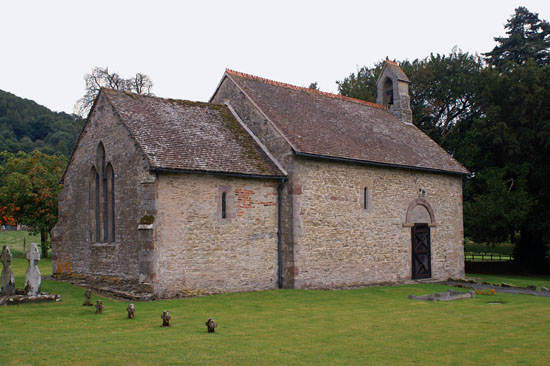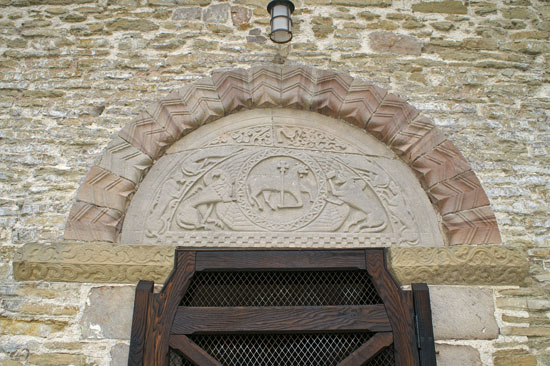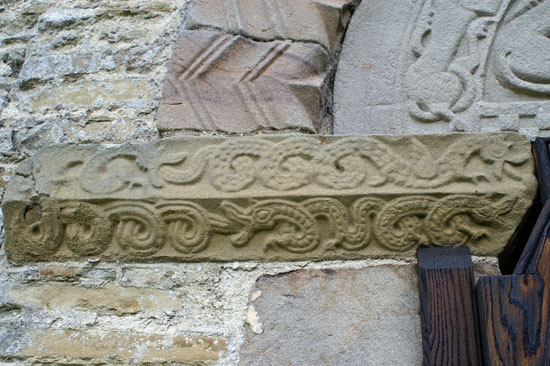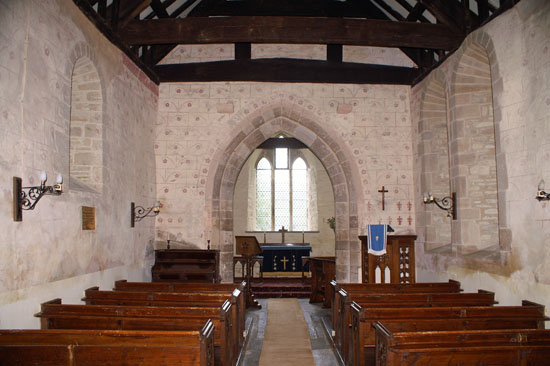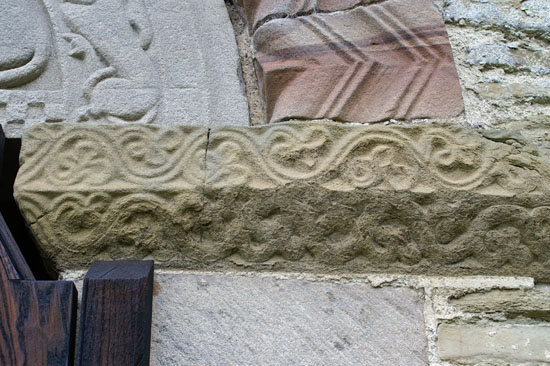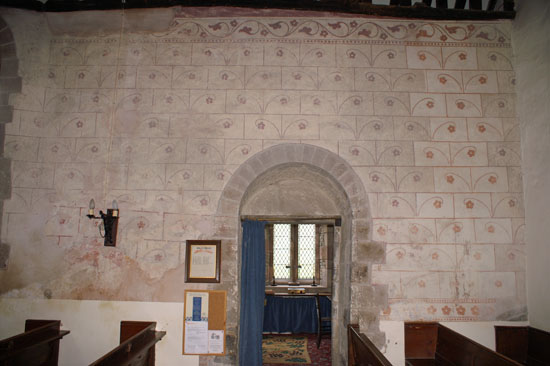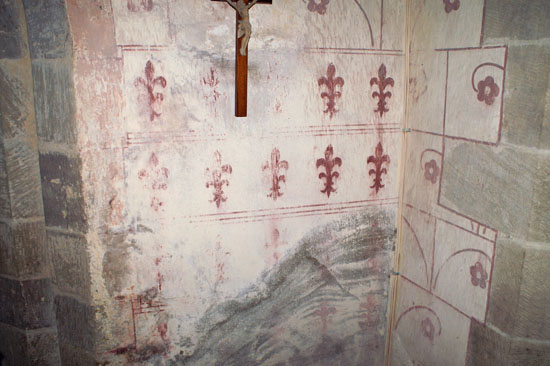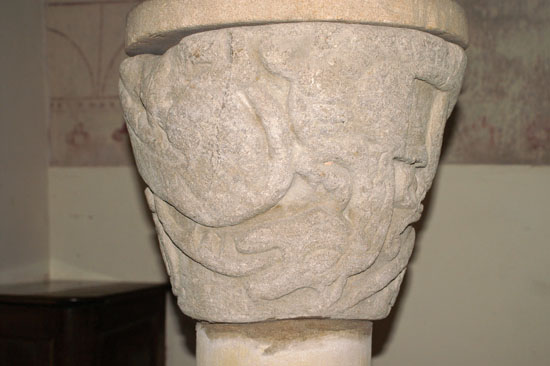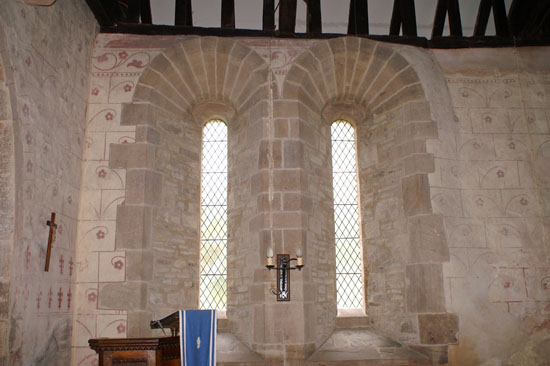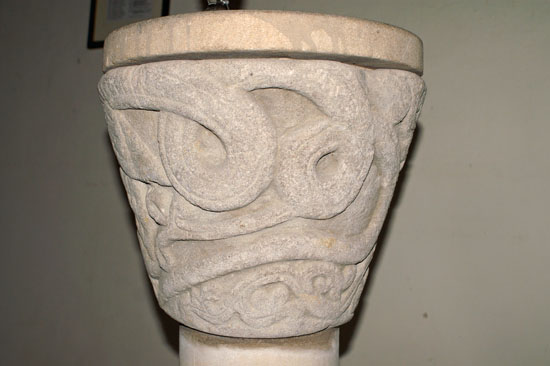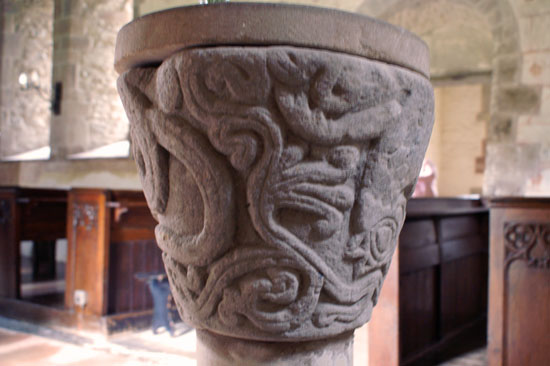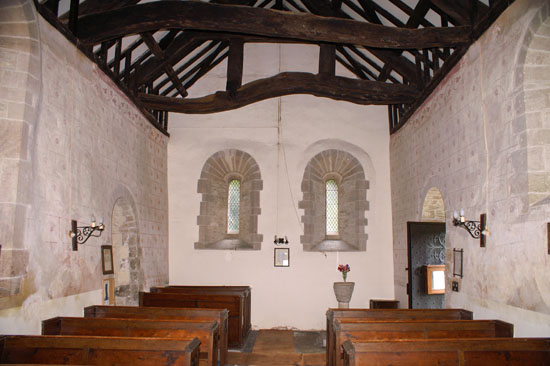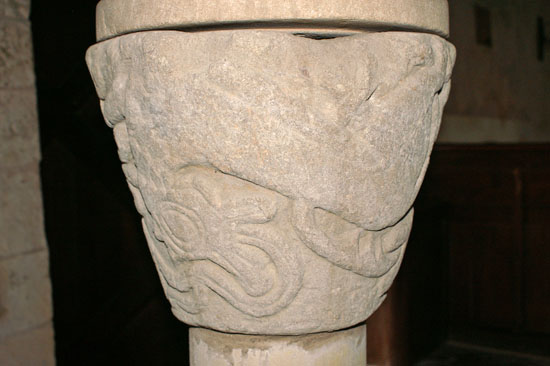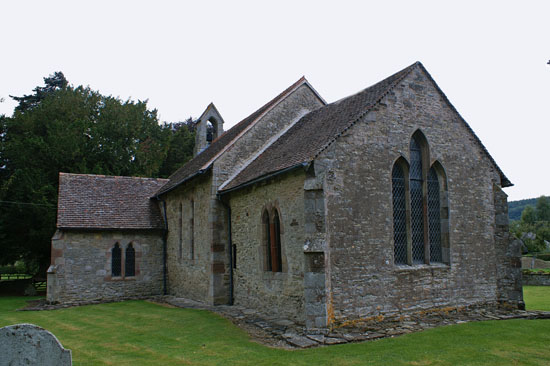|
|
||||||||||||||||||||||||||||||||||||||||||||||||||||||||||
|
Please sign my Guestbook and leave feedback |
||||||||||||||||||||||||||||||||||||||||||||||||||||||||||
|
Recent Additions |
||||||||||||||||||||||||||||||||||||||||||||||||||||||||||
|
|
||||||||||||||||||||||
|
is assumed to be St Luke’s Gospel. I find the Church Guide’s theory much more convincing because the griffin is a traditional symbol of Jesus and I wonder if this would have been felt necessary when the centrepiece of the tympanum is itself a symbol of Christ? Still, it’s fun to speculate! The left hand “impost” (which supports the tympanum, is decorated with a motif of intertwined dragons; the right hand one has a foliage design.Inside, the church is a simple one. Its main treasure is what looks like a stoup mounted on a column and which is used as a font! I took it to be a pillar piscina but close examination of the decoration proves that it is actually inverted. Thus it could not have been intended to hold water at all. One theory is that it was originally a base for a cross. Whatever, we do know that it was carved by the same man that was responsible for the rest of the church’s decoration. It has a lion’s head in profile. From the lion’s head and a double foliage stem emerges from his mouth. The lion is pursued by a dragon. The chancel arch is c13. There are round headed Norman lancet windows in the nave and chancel walls. The east window is a classic Early English triple lancet of c13 when the chancel was rebuilt. The windows in the west and south walls of the nave, however, although Norman in appearance are modern. |
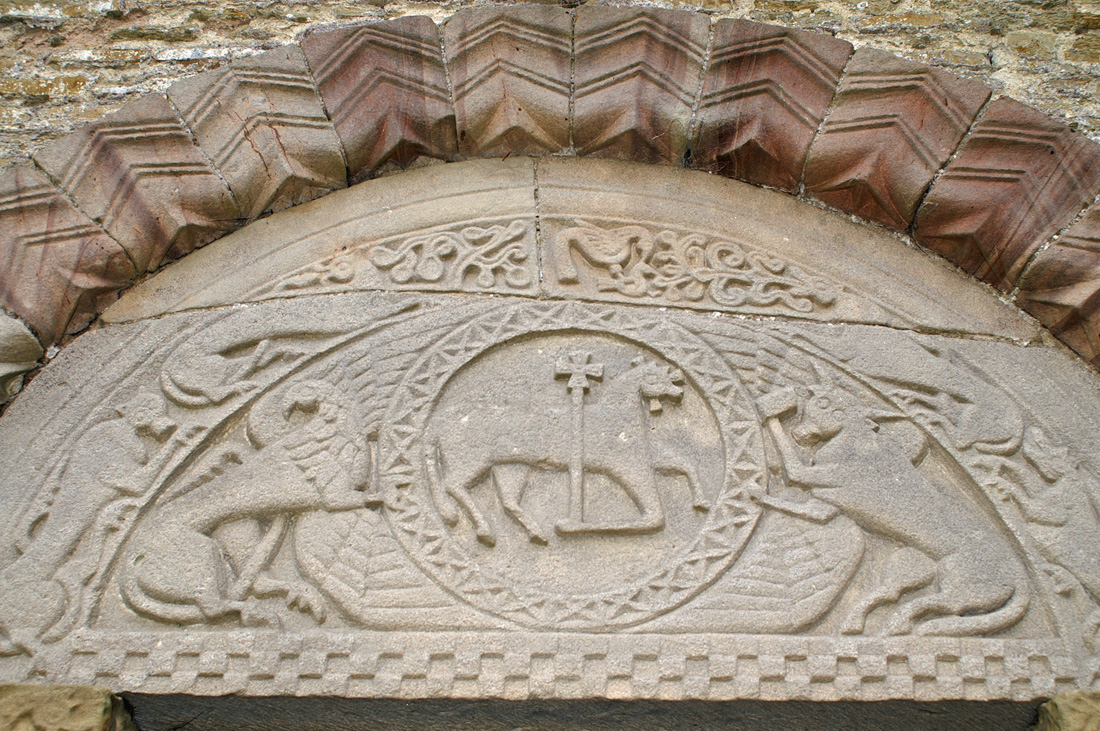 |
|
The state of preservation of Pipe Aston’s tympanum and the crisp clarity of the carving is almost umparalleled. See above for a description of the main motifs. There are two unidentifiable creatures each to left and right of the central vignette. The top two spew foliage from their mouths. Charmingly, on the right hand side the foliage bears a small bird that in turn has a larger bird apparently pecking at its head! Please follow the link to Rock, St Peter & St Paul Church (specifically the footnote) for more about this motif which is unique to the Herefordshire School of Romanesque carving. See another example at Ribbesford, St Leonard. |
|
|
||||||||||||||||||||||||||||||||||||
|
The impost blocks of the north doorway. To the left is a trio of dragons. One of the top pair is devouring the tail of the other while his own tail continues down to the lower course where his own body is nibbled at by a third dragon! This dragon, in turn, has a head at both ends and is not suffering the ignominy of cannibalism! The right hand impost is of intertwined foliage producing trefoil “flowers”. |
|
|
||||||||||||||||||||||||||||||||||||||||||||||||||||||||||||||||||||||||||||||||
|
Four views of the “stoup”. I have increased the “temperature” of some of these pictures to try to bring out the design a little more. |
|
|
||||||||||||||||||||||||||||||||||||||||||||||||
|
Footnote - Hugh de Mortimer and Oliver de Merlimond |
|
The Mortimer family were very big cheeses indeed in these parts for many centuries. Hugh Mortimer built Wigmore Abbey over the period of 1172 and 1179. Only ruins have remained since Henry VIII’s Dissolution of the Monasteries. Aston (not then Pipe Aston) was mentioned in Domesday Book as the “ton” (farm) of a man named “Aese”, hence its name. The land belonged to the Mortimers. One Oliver de Merlimond was appointed Chief Steward to Hugh de Mortimer. Oliver undertook a pilgrimage to Santiago de Compostella in northern Spain - indelibly associated with St James - and on his return initiated the building of Shobdon Church using designs and motifs clearly derived from those at Santiago. It is likely that the master masons were French. These designs were repeated at Pipe Aston, Brinsop (also Herefordshire), Ribbesford in Worcestershire and Alveley in Shropshire. It is not known whether Hugh de Kilpeck ever met Hugh de Mortimer - they were political enemies; but it is certain that he used de Merlimond’s masons, and thus the same style, at the celebrated Kilpeck St Mary & St David Church in 1140. This information was updated on 1 March 2012 with information provided by Paul Remfry, historian. Read about him here http://www.castlewales.com/remfry.html. |
